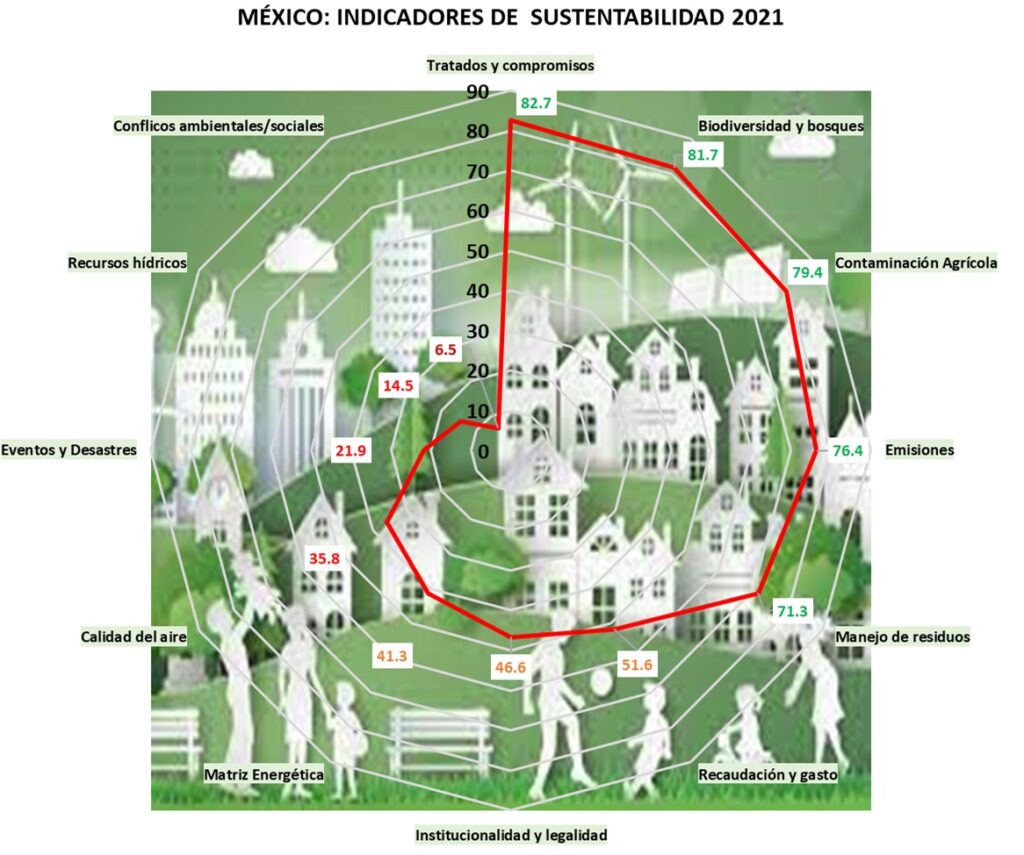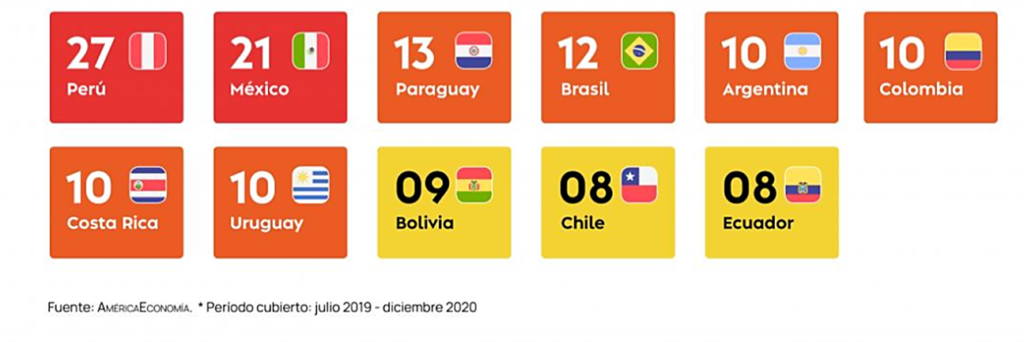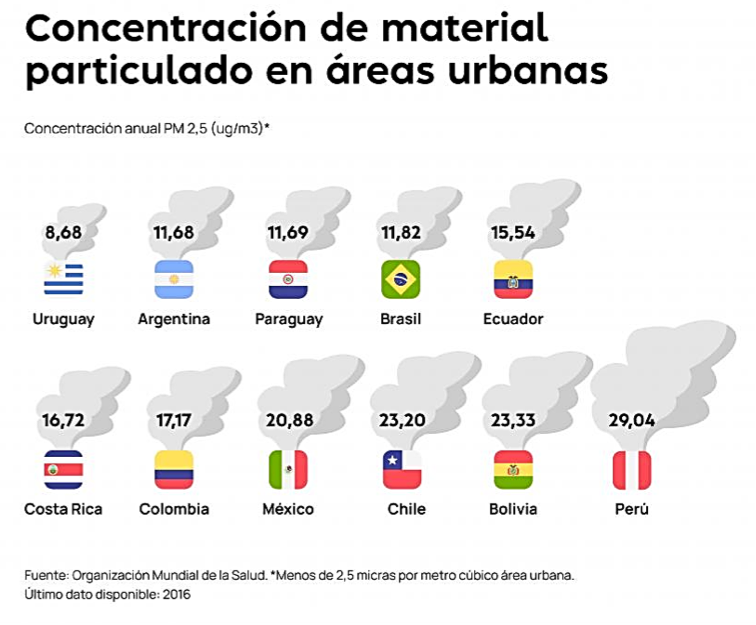Magazine AmericaEconomy, specialized in Latin America and incorporated into Dow Jones &Co, offers his reading on the sustainability of Latin American nations. It highlights that the efforts within the countries are uneven and difficult, as evidenced by the fact that many of them have not yet ratified the Escazú Costa Rica Agreement.
AmericaEconomy focuses on the environmental performance of eleven Latin American countries and presents a Ranking Latin American Sustainability, which measures overall progress towards sustainability in the region in twelve dimensions (using 26 standardized and supported indicators).
Costa Rica, Uruguay and Colombia head the second edition of the ranking, in which new indicators are incorporated. The research includes for the first time a vision of public policies, in a unique effort at the level of measurements, which makes it possible to evaluate the strength with which governments and states are willing to advance in the protection of the environment.
Data processing
The methodology shows long-term technical indicators – such as emissions, air quality or the energy matrix – and analyzes in depth the environmental institutional framework, legislative activity, binding and non-binding international commitments, active socio-environmental sources of conflict. , and environmental disasters (such as spills or fires).
The data comes from validated secondary sources, such as international governmental organizations and academic research centers, as well as some journalistic investigations of the AmericaEconomy. The information and facts gathered demonstrate the lack of a coordinated strategy in the region, although there are countries that work individually on climate action with imitable programs (such as Costa Rica and Uruguay, who lead the count).
Best (and worst) practices
Mexico shows low yields caused by its environmental and social conflicts, its lack of water resources and by regularly presenting a large number of events and disasters. The air quality is not good, nor is its energy matrix. Their institutionality and legality, as well as their collection and spending, end up disapproved.
It has better marks in waste management, emissions and agricultural pollution. It reaches its best position in biodiversity and forests, as well as a signatory of treaties and commitments.
Best practices, rated on a 100-point basis, are observed in:
- Costa Rica: Treaties and commitments; emissions; collection and spending; institutionality and legality.
- Uruguay: Biodiversity and forests; air quality: absence of environmental / social conflicts.
- Colombia: Agricultural pollution.
- Chile: Waste management.
- Paraguay: Energy Matrix.
- Bolivia: Events and disasters.
- Peru: Water resources.
It may interest you…
Mexico, for its part, has its best rating in signing International Treaties and Commitments, but signing without acting accordingly does not help much.
Mexico qualifies with 55.2 and, with it, is ranked eighth in Latin America. The table on Sustainability in the region is headed by Costa Rica and Uruguay. These countries, by the way, also stand out in quality of life and human development.

–

–
Natural disasters in the region
The country with the largest recorded non-natural environmental disasters (from July 2019 to December 2020) is Peru, with 27 disasters. Among them, the fires stand out.
Then comes Mexico, with 20 events of this type, and with an unfortunate first place in disasters classified as more serious: spills and leaks.
It is followed by Paraguay, with 13 disasters and a fire problem similar to that of Peru (with risk areas where accidents are repeated year after year). However, the type of disasters with the greatest severity and weight, given that the hand of man prevails, occurs in Mexico and Brazil —countries that have the worst performance in this dimension—.

–
National Organizations for the Environment
In the region there is an environmental institutionality with various forms and different levels of bureaucracy. Of the eleven countries investigated, only Mexico does not have a Ministry of the Environment or similar.
The Parliaments of these countries all have a commission in both chambers that deals with environmental issues. What is not even is the importance given in the legal sphere to conflicts: only four countries (Bolivia, Chile, Costa Rica and Paraguay) have environmental courts.
You can also read …
–


